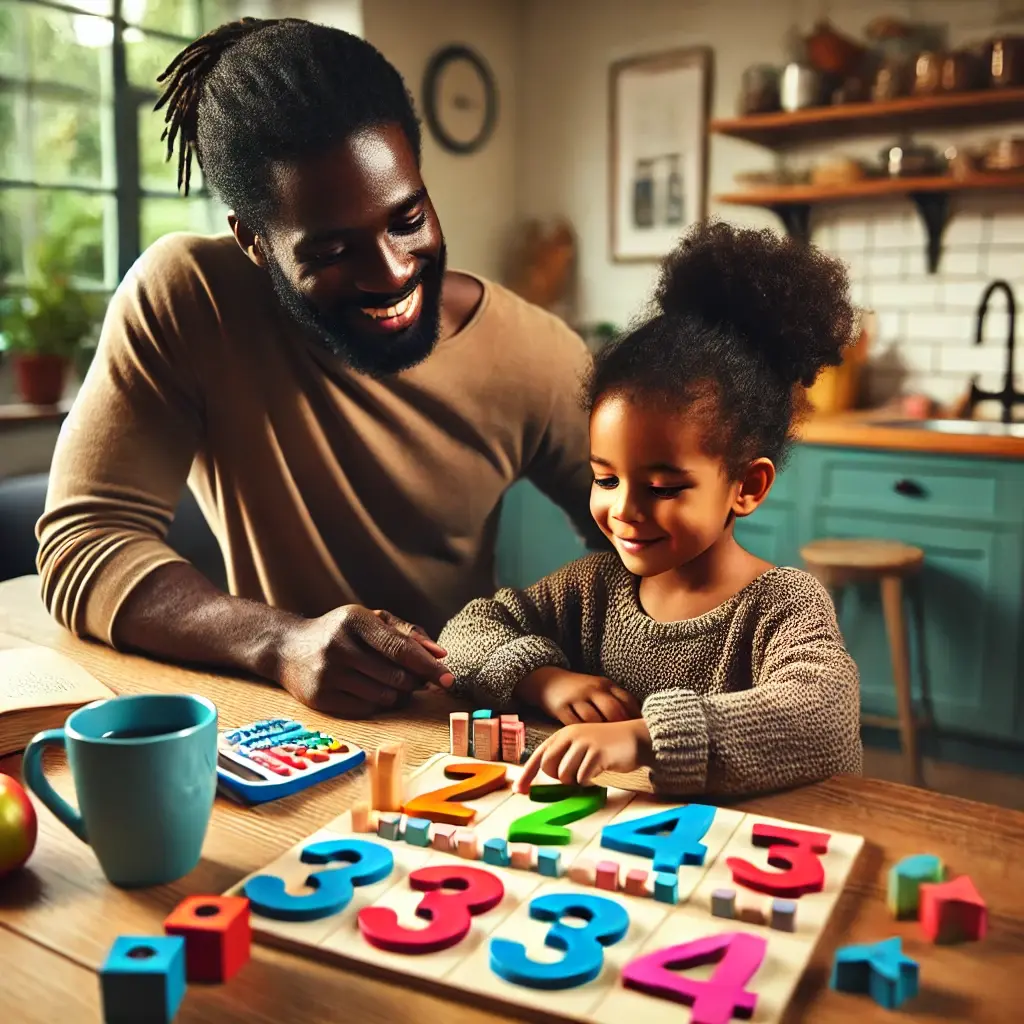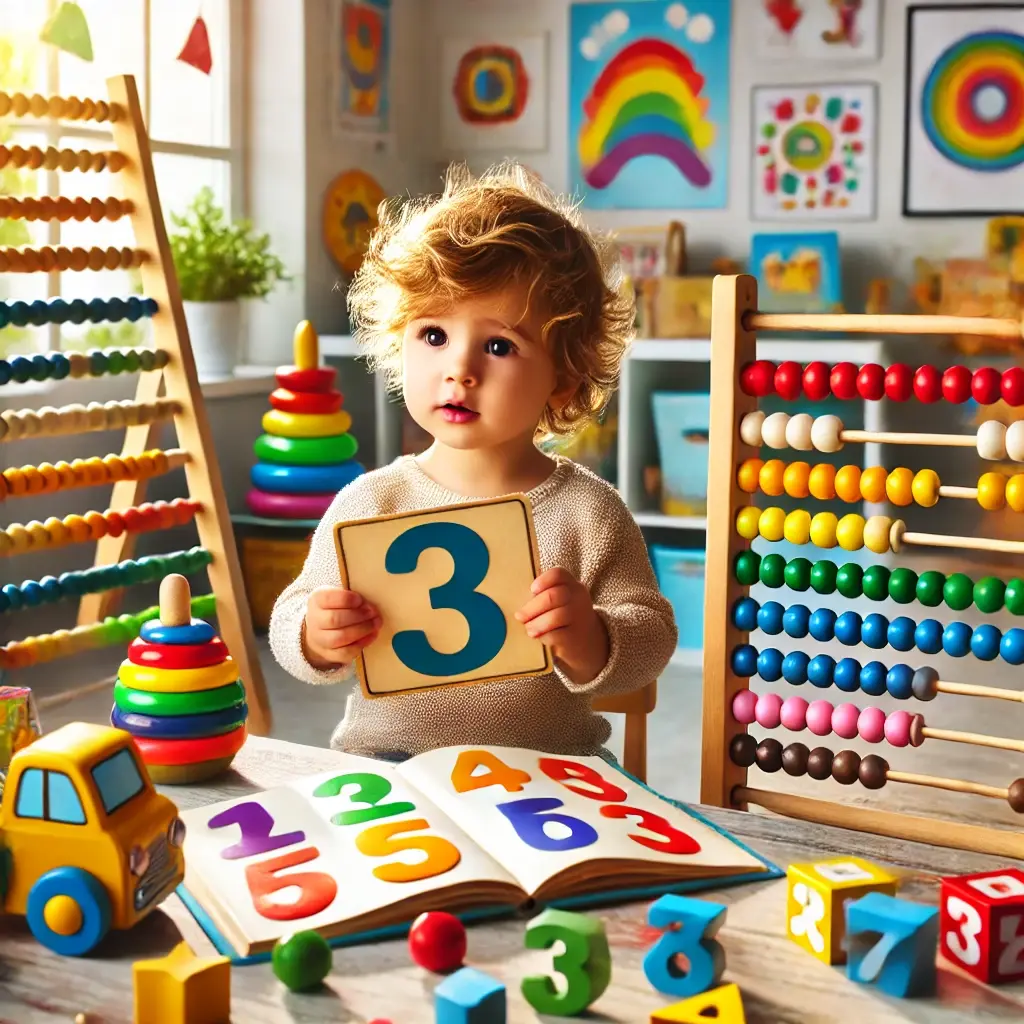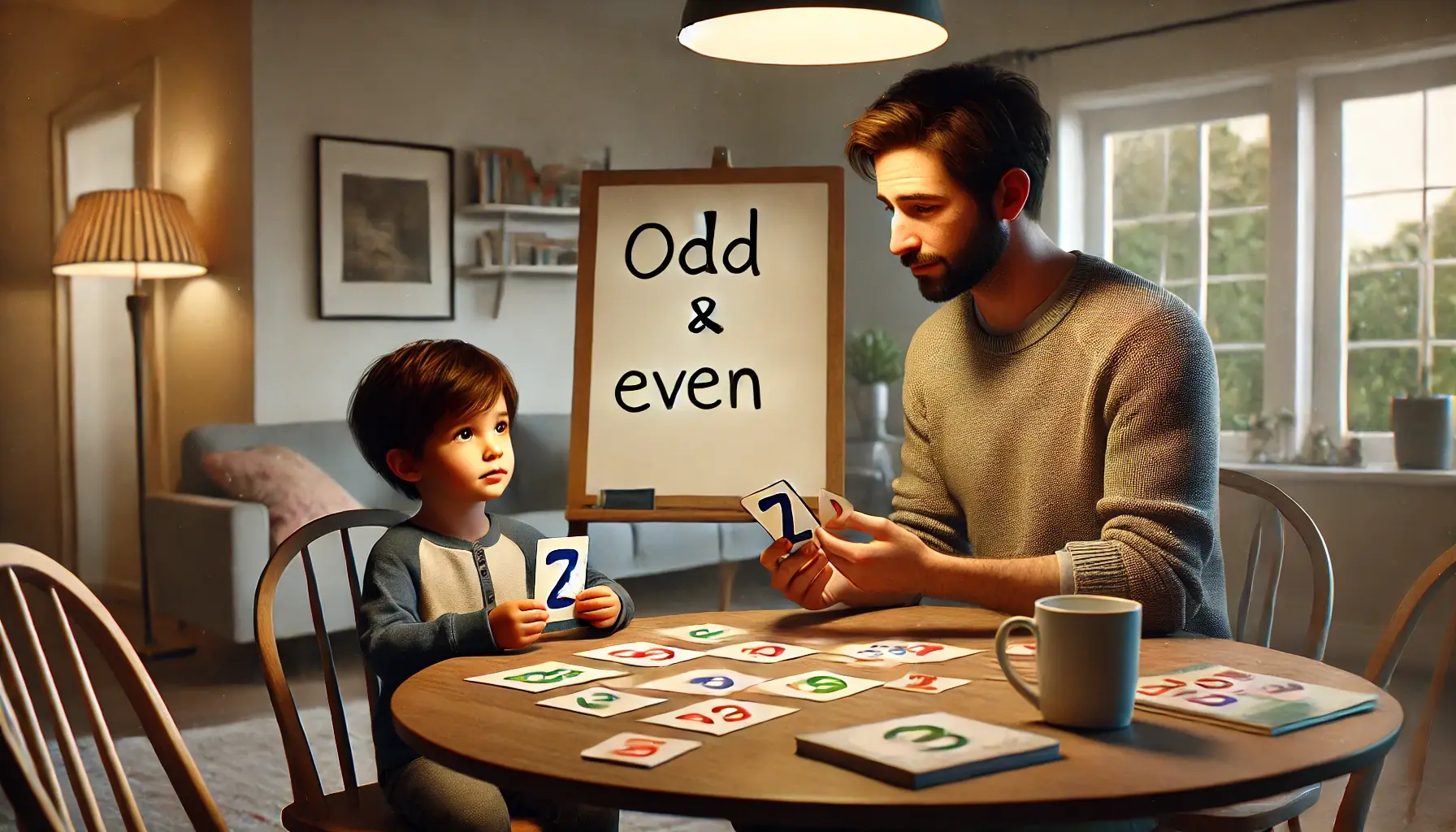
In 3rd grade, the math starts to get more interesting! The concepts become more complex, and the pace picks up, making it an exciting time for your child to build on their learning and strengthen their 3rd grade math skills. This year, they’ll be working with larger numbers, diving into multiplication and division, and getting a handle on things like rounding, estimation, and counting money.
It’s important that they have a solid grasp of the basics they learned in previous grades, such as addition, subtraction, and basic number sense, as these skills form the foundation for 3rd grade math concepts.—things your child should know before entering third grade. It’s a big year where everything clicks, setting them up for success with more advanced math.
What Do 3rd Graders Learn in Math? 10 3rd Grade Math Skills and Topics
In 3rd grade, your child will learn important 3rd grade math concepts that will help them in the future. Here are 10 key topics they’ll explore this year.
1. Rounding, Estimation, and Place Value
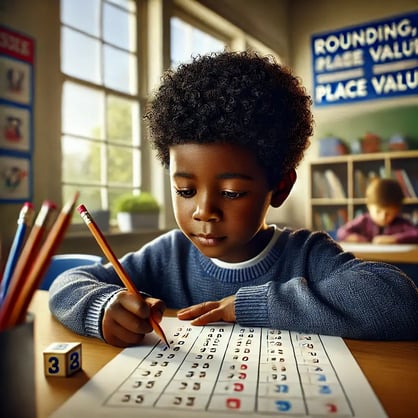
In 3rd grade, your child will start to master the concepts of rounding, estimation, and place value, which are key to building a solid math foundation. While rounding to the nearest 10 is introduced in 2nd grade, revisiting this concept in 3rd grade is crucial. At this stage, children have a more developed understanding of numbers and place value, which allows them to grasp rounding more effectively.
Our third-grade books guide students through rounding numbers by focusing on place values in the thousands, hundreds, tens, and ones. They’ll learn that each number falls between two tens and how to decide which ten it’s closest to. They'll also explore why rounding numbers with a midpoint value, like those with 5 in the one's place, isn’t always the best strategy for accuracy, especially when estimating sums or differences.
In addition, your child will practice estimating answers to basic addition and subtraction problems, a skill that allows them to make quick, reasonable predictions and solve problems more efficiently.
2. Addition and Subtraction
In 3rd grade, addition and subtraction become more challenging as your child starts working with larger numbers. For example, they'll learn to solve problems like adding 1,234 + 2,789 or subtracting 5,432 - 1,678. Our book will guide them through these calculations, helping them understand the process of carrying over and borrowing as they work with numbers up to the thousands' place. This strengthens their math skills and boosts their confidence in tackling complex problems.
3. Decimals and Counting Money
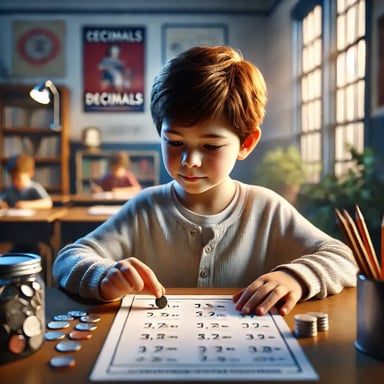
In 3rd grade, your child will start learning about decimals, an important concept that helps connect whole numbers and fractions. For example, they'll learn that in the decimal 3.75, the '3' represents three whole units, the '7' represents seven-tenths, and the '5' represents five-hundredths. Our book will guide them through writing this decimal in expanded form, such as 3 + 0.7 + 0.05, and practicing rounding it to the nearest whole number or tenth.
Additionally, they'll apply these decimal skills to understanding money. For instance, they'll learn that $1.25 is the same as one dollar and twenty-five cents, and they'll practice adding and subtracting money, like figuring out how much change to expect after buying an item. These exercises help your child see how decimals are used in everyday life, especially when dealing with money.
4. Multiplication
In 3rd grade, your child will start learning about multiplication, a key concept that helps them understand how to combine groups of numbers efficiently. For example, they'll learn that in the multiplication problem 4 × 6, the '4' represents four groups, and the '6' represents six items in each group. The 24 product shows the total number of items in all combined groups. Our book will guide them through practicing multiplication with one-digit numbers, such as 7 × 3, and then advance to two-digit by one-digit problems, like 12 × 4.
Additionally, they'll apply these multiplication skills to solve real-life problems. For instance, if they need to find out how many apples are in 5 baskets with 8 apples each, they'll use multiplication to determine that there are 40 apples in total quickly. This practical approach helps your child see how multiplication is used in everyday situations, making math relevant and engaging.
5. Division
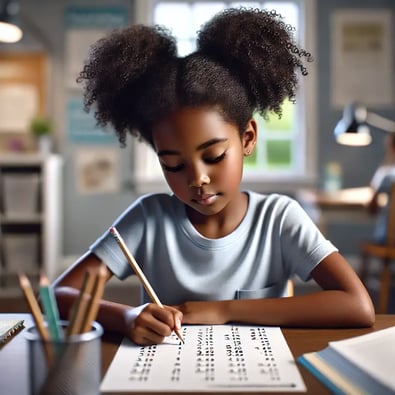
In 3rd grade, your child will start learning about division, a key math concept that helps them understand how to split numbers into equal parts. For example, they’ll learn that in the division problem 24 ÷ 6, the '24' represents the total number to be divided, and the '6' represents the number of groups they are splitting it into. The result, 4, shows how many items are in each group. Our book will guide them through dividing one-digit numbers by other one-digit numbers, such as 18 ÷ 3, and then progress to dividing two-digit numbers by one-digit numbers, like 56 ÷ 8.
Additionally, they’ll practice using division in real-life scenarios. For example, if they need to share 30 cookies equally among 5 friends, they’ll use division to determine that each friend gets 6 cookies. This practical application helps your child see how division is used to solve everyday problems, making math more meaningful and interesting.
6. Word Problems
In 3rd grade, your child will encounter word problems, which are often challenging but crucial for developing problem-solving skills. Our book provides a wide range of word problems covering various topics, such as addition, subtraction, counting money, decimals, multiplication, and division.
For example, your child might solve a problem where they need to find out how many apples are left after buying a bag with 12 apples and giving away 5. They’ll use subtraction to determine the answer. Additionally, some problems will require them to use more than one math operation, such as solving a question involving multiplication and addition, like figuring out how many total candies are in 4 bags if each bag contains 6 candies and adding 8 more candies to the total.
7. Fractions
In 3rd grade, your child will start learning about fractions, which is all about understanding parts of a whole number. Our book uses many images, like shapes cut into pieces, to make the concept of fractions clear and easy to grasp.
For example, if you have a pizza cut into 8 slices and eat 3 of them, you’ve eaten 3/8 of the pizza. By the end of the book, your child will be able to write fractions independently, like 1/2 or 3/4, and even compare them to determine which is bigger or smaller. They’ll practice with plenty of fun problems to help them see how fractions work in everyday life.
8. Constructed Response
In 3rd grade, your child will start working on constructed responses and more detailed answers to math problems. A constructed response typically comes from a word problem that has several parts. Your child will need to solve each part of the problem and show their work to explain how they arrived at their answer.
For example, imagine a word problem that says: "Samantha has 15 apples. She gives 4 apples to her friend and then buys 7 more apples. How many apples does Samantha have now?" Your child would need to first subtract 4 from 15, showing that she has 11 apples left. Then, they would add 7 to 11 to discover that Samantha now has 18 apples. They should show all their steps and calculations to demonstrate their understanding.
9. Time

In 3rd grade, your child will learn to tell time on an analog clock and in written form. Our book covers the basics of reading an analog clock so your child will understand what each hand on the clock represents and how to tell the time accurately.
For example, if the short hand is on the 3 and the long hand is on the 12, your child will learn it’s 3 o’clock. They’ll also practice writing out times in words, like saying "3:00" as "three o'clock."
By the end of the lessons, your child will be comfortable telling time on an analog clock and writing out times, making them more confident in managing their daily schedule.
10. Geometry, Perimeter, and Area

In 3rd grade, your child will build on their knowledge of shapes by learning to find the perimeter and area of different figures. Our book introduces the formulas for these concepts and provides plenty of practice problems to help your child apply what they've learned.
For example, if your child is working with a rectangle that has a length of 5 units and a width of 3 units, they will learn to calculate the perimeter by adding up all the sides (5 + 5 + 3 + 3 = 16 units) and the area by multiplying the length and width (5 × 3 = 15 square units).
The book also includes constructed response questions where your child will need to solve problems involving both perimeter and area, helping them practice and solidify their understanding. By the end of these lessons, your child will be comfortable finding the perimeter and area of various shapes and applying these skills to different math problems.
Make Your Child a Math Genius with Genie Academy’s 3rd Grade Math Tutoring Programs
Building strong math skills is crucial for 3rd graders, and finding the right support can make a big difference. Genie Academy, a well-known tutoring center in New Jersey, offers a variety of tutoring options to help students excel. They provide instruction in math, abacus, reading, writing, and coding, with online and offline classes available, including 3rd grade math tutor services to guide students through their learning journey.
Their curriculum complements and enhances what students are learning in school, offering advanced material to help them get ahead. Genie Academy’s small class sizes ensure that each student receives personalized attention, making it easier for 3rd graders to grasp 3rd grade math concepts and build confidence in their math abilities.
Our locations include East Brunswick, Hillsborough, Marlboro, South Brunswick, Plainsboro, Woodbridge, and South Plainfield, New Jersey.
Learn more about us, our core values, our philosophy, our numerous success stories, and our history. Also, read our reviews and testimonials and learn about the true benefits of Genie Academy.
Helping Your Child With 3rd Grade Math
Supporting your child in third-grade math can be both rewarding and fun. Here are some tips to help make their learning experience positive and effective:
- Understand the Basics: Familiarize yourself with the key math concepts your child will learn, such as multiplication, division, fractions, and geometry. Knowing what they’re studying will help you provide better support.
- Practice Regularly: Encourage your child to practice math problems regularly. Use their textbook or other resources to review and practice key concepts. The more they practice, the more confident they’ll become.
- Use Real-Life Examples: Incorporate math into daily activities. For example, cooking can be used to practice fractions by measuring ingredients or playing games that involve addition and subtraction to make learning more engaging.
- Break Down Problems: Help your child break down complex problems into smaller, manageable steps. This can make challenging problems seem less overwhelming and help them understand the process.
- Encourage Questioning: Foster an environment where your child feels comfortable asking questions. Discussing their thought process and reasoning can help clarify their understanding and improve their problem-solving skills.
- Use Visual Aids: Visual aids like number lines, clocks, and fraction charts can help your child better understand abstract concepts. These tools can make learning more concrete and relatable.
- Be Patient and Positive: Learning new math concepts can sometimes be frustrating. Offer encouragement and celebrate their successes to build their confidence and motivate them.
- Review and Reinforce: Regularly review previously learned material to reinforce their knowledge and ensure they retain important concepts.
What Do 3rd Graders Learn in Math by the End of 3rd Grade?
By the end of 3rd grade, kids are expected to have a solid understanding of several key math concepts. Here’s a rundown of what they should know:
- Multiply, Divide, and Conquer Math: Children should confidently handle multiplication and division, including solving problems with single-digit numbers and understanding their relationships.
- The Two-Step with Word Problems: Students should be adept at solving word problems that require two steps, applying addition, subtraction, multiplication, or division to real-world situations.
- Fractions Matter: Kids should be able to identify and work with simple fractions, compare them, and understand their role in dividing a whole into parts.
- Graphs and Measuring: They should be familiar with reading and creating basic graphs and measuring objects using standard units. This includes understanding concepts of mass and volume.
- Addition, Subtraction, Multiplication, & Division: Mastery of these basic operations is essential. Students should be able to perform and apply these operations to solve problems efficiently.
- Measurement & Data: At this stage, it is crucial to understand how to measure length, weight, and volume and interpret data from simple graphs.
- Mass and Volume: Students should be able to measure and compare the mass and volume of different objects using appropriate units.
- Tell Time: By the end of the year, kids should be able to read and write times on an analog clock and understand the passage of time in hours and minutes.
Conclusion
Third-grade math is crucial and exciting for your child. It introduces them to essential 3rd grade math concepts like multiplication, division, and fractions. This stage lays the groundwork for future learning and problem-solving skills.
Your involvement is vital in this process. By actively participating in their math activities and offering support, you help reinforce their learning of 3rd grade math skills and build their confidence. Embrace the journey together, celebrate their progress, and encourage their enthusiasm for math. Your support significantly affects their success and sets them up for continued achievement.




